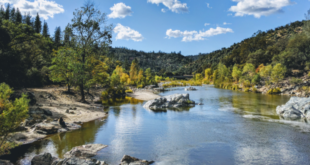The California Department of Conservation (DOC) announced late last week that eight organizations have received a total of $1.85 million in grants to hire watershed coordinators to help in building local capacity to improve forest health. The new watershed coordinators will work to help achieve the state’s Forest Carbon Plan, presented in May 2018, and Executive Order B-52-18, signed by then Governor Jerry Brown on May 10, 2018, both of which are intent on achieving the California Global Warming Solutions Act’s goal of reducing California’s greenhouse gas emissions 40 percent below 1990 levels by 2030.
“Healthy forests are essential to reduce catastrophic wildfires, supply clean water, and help reduce greenhouse gas emissions,” DOC Director David Bunn said. “Watershed coordinators can play a major role in ensuring the health of our forests by promoting collaboration, integrating watershed management efforts, and supporting local activities that restore resilience to forest lands.”
Funded by the California Environmental License Plate Fund and administered by DOC, the Forest Health Watershed Coordinator Grant Program has achieved significant success with grant funds in 2000-2015. A study of funding watershed coordinators by the Sierra Institute for Community and Environment (SICE) found that every dollar spent to hire a coordinator leveraged more than seven times that investment in the development of watershed management plans and restoration projects.
“The return on investment in watershed and forest health has been impressive, and California’s commitment to these issues is strong,” DOC’s Bunn said. The Natural Resources Agency and DOC announced earlier this month the funding of $20 million in block grants for local and regional projects to improve forest health and increase fire resiliency. These funds are separate from the $1.85 million grants now being funded.
The new watershed coordinator positions will be funded for two years in project areas that encompass about 31,000 square miles within 26 counties – from Modoc County in the northeast, to coastal areas from southern Humboldt County to San Luis Obispo County, and to Madera, Tulare, and Fresno counties in the inland central part of the state. Areas identified by the California Department of Forestry and Fire Protection as being most at risk of catastrophic wildfires were given priority for the grants. These decisions help validate the finding by SICE that that forest health and watershed health are inextricably linked.
The recipients of the $1.85 million in grants include:
Recipient Agency Funding Amount
Resource Conservation District of Butte County $217,564
Sierra Resource Conservation District $235,000
South Yuba River Citizens League $234, 995
Humboldt County Resource Conservation District $231,900
Tuolumne River Trust $235,000
Resource Conservation District of Santa Cruz County $234,959
Pit Resource Conservation District $235,000
Sierra Institute for Community and Environment $228,2645
“Each grant application received highlighted good local projects and collaboration,” said Keali’i Bright, director of DOC’s Division of Land Resource Protection. “Our ability to protect forested lands depends on strong local leadership, and this fantastic response underscores the need for continued support.”
For additional information on California’s Forest Carbon Plan, go to: https://www.fire.ca.gov/fcat/downloads/CaliforniaForestCarbonPlaFinal.pdf. For more information on California’s Executive Order B-52-18, go to: https://www.gov.ca.gov/wp-content/uploads/2018/05/5.10.18-Forest-EO.pdf.
 California Water News Daily Your Source For Water News in California
California Water News Daily Your Source For Water News in California


